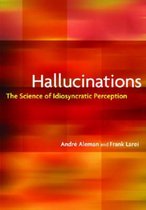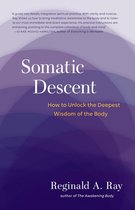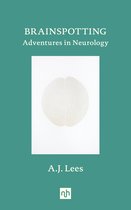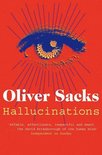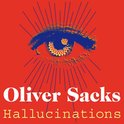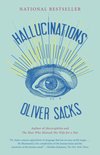Hallucinations
Afbeeldingen
Sla de afbeeldingen overArtikel vergelijken
- Engels
- Hardcover
- 9781410457318
- 19 april 2013
- 481 pagina's
Oliver Sacks
Samenvatting
Hallucinations don’t belong wholly to the insane. Much more commonly, they are linked to sensory deprivation, intoxication, illness, or injury. People with migraines may see shimmering arcs of light or tiny, Lilliputian figures of animals and people. People with failing eyesight, paradoxically, may become immersed in a hallucinatory visual world. Hallucinations can be brought on by a simple fever or even the act of waking or falling asleep, when people have visions ranging from luminous blobs of color to beautifully detailed faces or terrifying ogres. Those who are bereaved may receive comforting “visits” from the departed. In some conditions, hallucinations can lead to religious epiphanies or even the feeling of leaving one’s own body.
Humans have always sought such life-changing visions, and for thousands of years have used hallucinogenic compounds to achieve them. As a young doctor in California in the 1960s, Oliver Sacks had both a personal and a professional interest in psychedelics. These, along with his early migraine experiences, launched a lifelong investigation into the varieties of hallucinatory experience.
Here, with his usual elegance, curiosity, and compassion, Dr. Sacks weaves together stories of his patients and of his own mind-altering experiences to illuminate what hallucinations tell us about the organization and structure of our brains, how they have influenced every culture’s folklore and art, and why the potential for hallucination is present in us all, a vital part of the human condition.
Permissions Acknowledgments
Grateful acknowledgment is made to the following for permission to reprint previously published material:
American Academy of Neurology: Excerpt from “Anton’s Syndrome Accompanying Withdrawal Hallucinosis in a Blind Alcoholic” by Barbara E. Swartz and John C. M. Brust fromNeurology 34 (1984). Reprinted by permission of the American Academy of Neurology as administered by Wolters Kluwer Health Medical Research.
American Psychiatric Publishing: Excerpt from “Weir Mitchell’s Visual Hallucinations as a Grief Reaction” by Jerome S. Schneck, M.D., fromAmerican Journal of Psychiatry (1989). Copyright © 1989 by American Journal of Psychiatry. Reprinted by permission of American Psychiatric Publishing a division of American Psychiatric Association.
BMJ Publishing Group Ltd.: Excerpt from “Heautoscopy, Epilepsy and Suicide” by P. Brugger, R. Agosti, M. Regard, H. G. Wieser and T. Landis fromJournal of Neurology, Neurosurgery and Psychiatry, July 1, 1994. Reprinted by permission of BMJ Publishing Group Ltd. as administered by the Copyright Clearance Center.
Cambridge University Press: Excerpts from Disturbances of the Mind by Douwe Draaisma, translated by Barbara Fasting. Copyright © 2006 by Douwe Draaisma. Reprinted by permission of Cambridge University Press.
Canadian Psychological Association: Excerpt from “Effects of Decreased Variation of the Sensory Environment” by W. H. Bexton, W. Heron and T. H. Scott fromCanadian Psychology (1954). Copyright © 1954 by Canadian Psychological Association. Excerpt from “Perceptual Changes after Prolonged Sensory Isolation (Darkness and Silence)” by John P. Zubek, Dolores Pushkar, Wilma Sansom and J. Gowing fromCanadian Psychology (1961). Copyright © 1961 by Canadian Psychological Association. Reprinted by permission of Canadian Psychological Association.
Elsevier Limited: Excerpt from “Migraine: From Cappadocia to Queen Square” in Background to Migraine, edited by Robert Smith (London: William Heinemann, 1967). Reprinted by permission of Elsevier Limited.
The New York Times: Excerpts from “Lifting, Lights, and Little People” by Siri Hustvedt from
Productspecificaties
Inhoud
- Taal
- en
- Bindwijze
- Hardcover
- Oorspronkelijke releasedatum
- 19 april 2013
- Aantal pagina's
- 481
- Illustraties
- Nee
Betrokkenen
- Hoofdauteur
- Oliver Sacks
- Hoofduitgeverij
- Thorndike Press
Overige kenmerken
- Editie
- large type edition
- Extra groot lettertype
- Ja
- Product breedte
- 140 mm
- Product hoogte
- 25 mm
- Product lengte
- 159 mm
- Studieboek
- Nee
- Verpakking breedte
- 145 mm
- Verpakking hoogte
- 25 mm
- Verpakking lengte
- 218 mm
- Verpakkingsgewicht
- 544 g
EAN
- EAN
- 9781410457318
Je vindt dit artikel in
- Taal
- Engels
- Boek, ebook of luisterboek?
- Boek
- Studieboek of algemeen
- Algemene boeken
- Beschikbaarheid
- Leverbaar
Reviews
Negatief, positief, neutraal: we zetten een review altijd online. We controleren wel eerst of ’ie voldoet aan onze reviewvoorwaarden en niet nep is. We controleren ook of ’ie is geschreven door iemand die het artikel heeft gekocht via bol.com en zetten dit er dan bij. De controles gebeuren automatisch, al kijken er soms mensen mee. Bol.com betaalt niet voor reviews. Als een reviewer door een andere partij is vergoed, staat dit in de review zelf.
Negatief, positief, neutraal: we zetten een review altijd online. We controleren wel eerst of ’ie voldoet aan onze reviewvoorwaarden en niet nep is. We controleren ook of ’ie is geschreven door iemand die het artikel heeft gekocht via bol.com en zetten dit er dan bij. De controles gebeuren automatisch, al kijken er soms mensen mee. Bol.com betaalt niet voor reviews. Als een reviewer door een andere partij is vergoed, staat dit in de review zelf.
-
Zeer aangename aankoop én aangenaam boek
Positieve punten
- Inspirerend
Geschreven bij Hallucinations
Ontzettend blij met mijn aankoop. Het was zeer snel geleverd, aan het pakketje en het boek zelf was niets te bespeuren op vlak van beschadiging.
Het boek zelf is heel erg interessant en is bovendien vlot leesbaar.
Moest de prijs wat lager gelegen hebben, had ik er 10 gekocht om deze kennis uit te delen aan de wereld :-)Vond je dit een nuttige review?00
Kies gewenste uitvoering
Prijsinformatie en bestellen
De prijs van dit product is 70 euro en 86 cent. Dit is een tweedehands product.- Bestellen en betalen via bol
- Prijs inclusief verzendkosten, verstuurd door Bogamo 1 - Boeken outlet
- 30 dagen bedenktijd en gratis retourneren
Alle bindwijzen en edities (5)
-
12,99Direct beschikbaar
-
11,50Op voorraad. Voor 15:00 uur besteld, morgen in huis
Levertijd
We doen er alles aan om dit artikel op tijd te bezorgen. Het is echter in een enkel geval mogelijk dat door omstandigheden de bezorging vertraagd is.
Bezorgopties
We bieden verschillende opties aan voor het bezorgen of ophalen van je bestelling. Welke opties voor jouw bestelling beschikbaar zijn, zie je bij het afronden van de bestelling.
Tooltip -
12,01Uiterlijk 11 juni in huis
Levertijd
We doen er alles aan om dit artikel op tijd te bezorgen. Het is echter in een enkel geval mogelijk dat door omstandigheden de bezorging vertraagd is.
Bezorgopties
We bieden verschillende opties aan voor het bezorgen of ophalen van je bestelling. Welke opties voor jouw bestelling beschikbaar zijn, zie je bij het afronden van de bestelling.
Tooltip -
70,86Uiterlijk 7 juni in huis
Levertijd
We doen er alles aan om dit artikel op tijd te bezorgen. Het is echter in een enkel geval mogelijk dat door omstandigheden de bezorging vertraagd is.
Bezorgopties
We bieden verschillende opties aan voor het bezorgen of ophalen van je bestelling. Welke opties voor jouw bestelling beschikbaar zijn, zie je bij het afronden van de bestelling.
Tooltip -
53,95Uiterlijk 7 juni in huis
Levertijd
We doen er alles aan om dit artikel op tijd te bezorgen. Het is echter in een enkel geval mogelijk dat door omstandigheden de bezorging vertraagd is.
Bezorgopties
We bieden verschillende opties aan voor het bezorgen of ophalen van je bestelling. Welke opties voor jouw bestelling beschikbaar zijn, zie je bij het afronden van de bestelling.
Tooltip
Rapporteer dit artikel
Je wilt melding doen van illegale inhoud over dit artikel:
- Ik wil melding doen als klant
- Ik wil melding doen als autoriteit of trusted flagger
- Ik wil melding doen als partner
- Ik wil melding doen als merkhouder
Geen klant, autoriteit, trusted flagger, merkhouder of partner? Gebruik dan onderstaande link om melding te doen.

